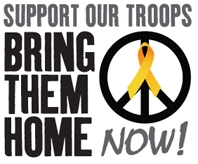Afghanistan Medals of Honor

If this is what being a hero feels like,
you can have it
--Cpl. Dakota Meyer, Medal of Honor recipient
_____________________
you can have it
--Cpl. Dakota Meyer, Medal of Honor recipient
_____________________
The Murphy, Meyer and Miller Medals of Honor all share certain hallmarks:
- The enemy was overwhelming
- There were no Quick Reaction Forces (QRF's) ready to launch
- The hostile fighters had intimate knowledge of the battle space and had prepared the battlefield. The U.S. troops were behind the power curve before the first round went downrange.
- The concept of Cover, Concealment, Key Terrain and Avenues of Approach were ignored.
- Escape routes were non-existent
- Fire support was questionable
- Medical support was negligible
- Witness statements appeared self-serving and conflicting
- The pace of the fights were dictated by the hostile forces and they maintained the initiative throughout
- If the missions had been successful, what would the exploitation phase have looked like? None appeared evident
These are some basic observations. Ranger stands behind his original battle analyses [links HERE, HERE, HERE, HERE and HERE.] (Per previous Afghan War MOH recipients, SFC Paul Smith's MOH was awarded in a correct action; SSG, Salvatore Giunta's MOH did not meet the bar in a sane world in Ranger's opinion, and should have been a Silver Star, instead.)
Since the Unit Commander established an Objective Rally Point (ORP), this indicates Meyer's action was a planned attack or raid. (This was not a meeting engagement -- a combat action that occurs when a moving force, not necessarily deployed for battle, engages an enemy at an unexpected time and place -- as the hostiles were expected to be on-target.)
An ORP is the last covered and concealed, easily identified terrain feature out of the range of enemy direct fire weapons. The ORP is where the assault element moves out to the line of departure, which is the kick-off point of the attack.
Though this was a planned attack and not a meeting engagement (as both sides were arrayed to fight) it was conducted by the U.S. as if it were not planned. No follow-on forces were available for employment once the enemy was fixed and engaged.
A deliberate attack, such as this one, differs from a hasty attack in that the attackers (U.S.) should have thoroughly prepared the battlespace, to include photo and satellite imagery and agent reports. Active patrolling is usually part of the preparations.
Planned or hasty attacks and meeting engagements are anticipated and are expected to further the Commander's scheme of maneuver. The unit should always be prepared to continue on order, or to be relieved by an element that will exploit any initial success. From materials available, it appears that all U.S. fights look a lot like meeting engagements; this is bad on many levels, but especially because it denies the U.S. elements their combat multipliers.
There was no indirect fire available to seal off enemy avenues of approach and to deny them assembly areas or to block their escape routes. This appears to have been one-sided slugfest weighted to the enemy's advantage.
MOH recipient Meyers was featured in the Dec. Maxim magazine (which hired him in September as their Military consultant), however, the following soldier's questions remain unanswered in that interview:
- What was the mission?
- Why did the attackers channelize and attack a larger, dug-in force without artillery or air support?
- Where was the assault elements reserve force?
- Why was the ORP not secured more solidly?
- Did the divergent assault elements have a habitual relationship, or was it an ad hoc, slap-dash pickup team?
- Why did the unit lack organic mortars?
- Why were there no registered artillery concentrations?
- The state of training for the Afghan Nation Army members (ANA's) was deficient per Meyer. Why would any unit employ questionable combat assets?
- Why were there last minute additions to and deletions from the team?
- What was the medical evac policy and SOP for this unit?
- [On Iwo Jim, the Marines would do a deliberate assault on fortified caves with two medical corpsmen per platoon, and this was still insufficient. Also at Iwo, there was a company and battalion aid station somewhere immediately to the rear to assist in medical evacuation and treatment. In Cpl. Meyer's action, there appears to be only one corpsman and he was killed forward.]
This is a condemnation of the staff planning and indicates a weakness in the overall troop leading procedures. Did the commander employ backward planning steps? It looks doubtful. Communication from higher to low and low-to-high appears spotty. At best, there was a commo link that did not provide appropriate fire support.
This was a down-and-dirty analysis. The next entry will address the details of the action.
Labels: afghanistan medal of honor, Cpl. Dakota Meyer MOH. Lt. Michael P. Murphy MOH











2 Comments:
Jim, your points are nearly impossible to argue against. I think they arise from confusion as to what the hell we are actually doing there. Is it war? Is it some kind of covert anti-terrorism op? Is it intel gathering? ???!
One thing though, and it's related to what I already stated, I know you love those stove pipes, but no one is going to hump a mortar or any other csw, not even a 60mm mortar, and ammo up in those mountains on a quick in and out intel or assassination mission; which is what some of your sited op.s were; esp Murphy.
avedis
Avedis,
i do not believe Murphy could carry tubes, nor do i smoke dope and think that he should.
All the other scenarios were vehicular approaches and mortars are appropriate. yes i like the mortars b/c they are responsive immediately.
With the 240 if prop employed and positioned you can approximate mortar support EXCEPT your gunners are exposed to direct return fire.
jim
Post a Comment
<< Home